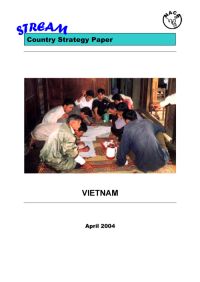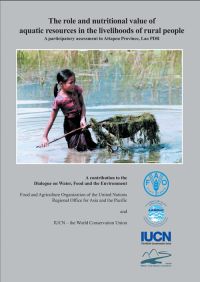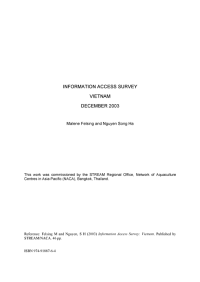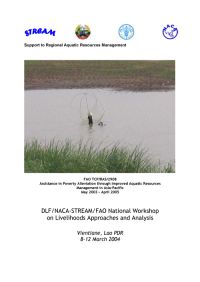Although Vietnam has long been listed among the poorest countries of the world, it has recently made large strides in reducing poverty and improving food security. However, the dramatic gains in poverty reduction in Vietnam still remain quite fragile. There is growing evidence to indicate that dependence on aquatic resources is correlated to poverty, and that aquatic resources constitute an important component of wider livelihoods strategies (largely from the Mekong Delta, Central Coast and the Northern Mountains).
This assessment is intended to address the concern that the ecological and livelihood functions and values of rice fields and adjoining wetlands are not fully appreciated in development planning. A participatory assessment was conducted in Attapeu Province, Lao PDR to determine the role of aquatic resources in the nutritional status of people engaged in rural livelihoods and to determine any opportunities, constraints or threats that may exist concerning the management of aquatic resources and future development in the province.
The purpose of the workshop was to develop and document mechanisms for training in livelihoods approaches and analysis, and to build national capacity to conduct livelihoods analysis. The workshop in Ranchi was a joint India-Nepal event. A central element of the workshop was a visit to the Jabarrah community, where participants learnt about the community’s livelihoods. In addition to gaining information about the Jabarrah community itself, participants also had important insights into how best to conduct livelihoods analyses.
This study aims to provide an overview of media currently used in Vietnam, with particular focus on use of media for extension purposes, to explore access to information, and information exchange between stakeholder groups and institutions within the aquatic resources and fisheries sectors, to investigate the information needs of rural communities involved in fisheries and aquatic resources management and to make recommendations for increasing the efficiency of communication with different stakeholders.
This is the report of the “DLF/NACA-STREAM/FAO National Workshop on Livelihoods Approaches and Analysis” that was conducted in Vientiane, Lao PDR from 8-12 March 2004. The purpose of the workshop was to develop and document mechanisms for training in livelihoods approaches and analysis, and to build national capacity to conduct livelihoods analysis. The workshop in Vientiane was the first STREAM event in Lao PDR.




